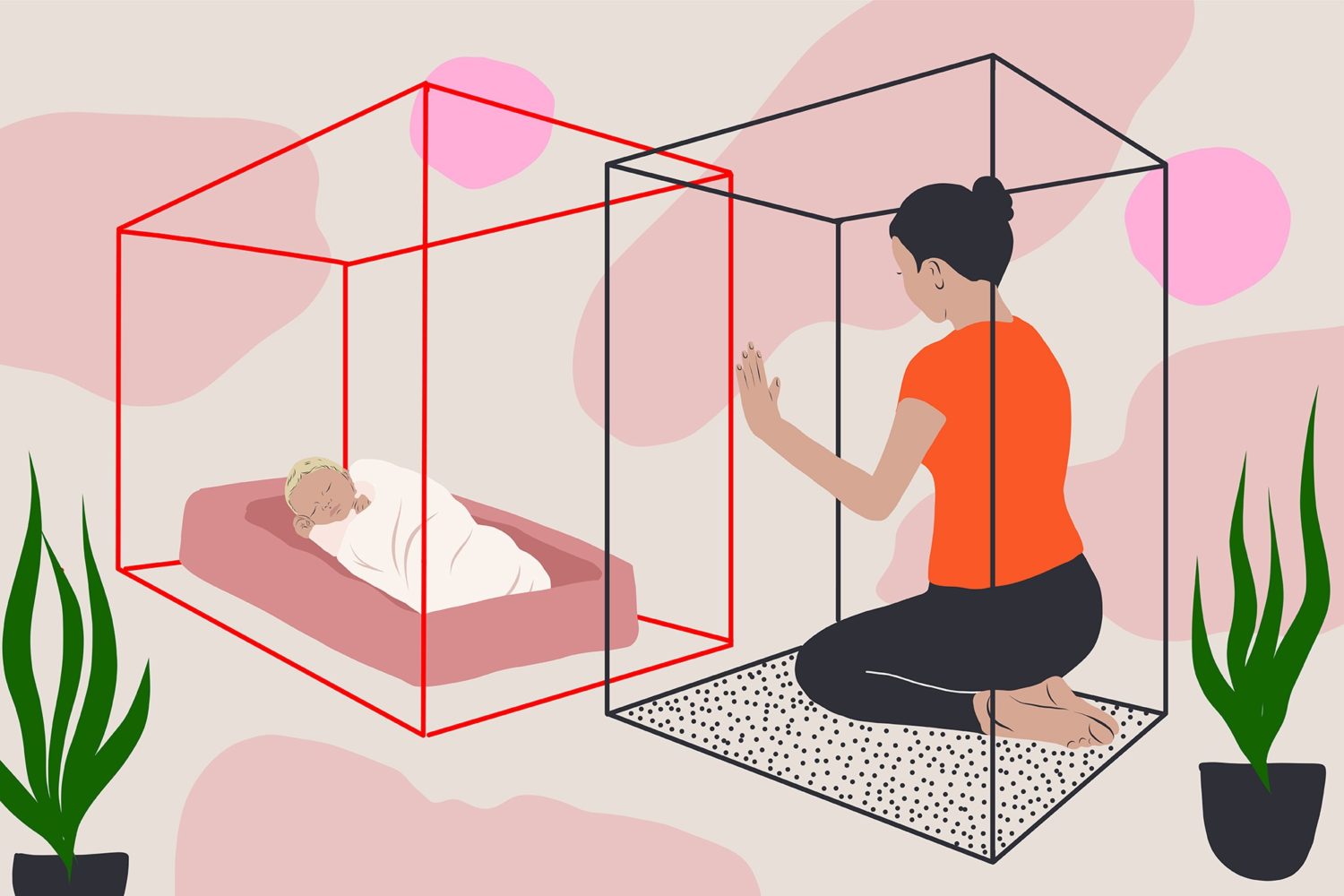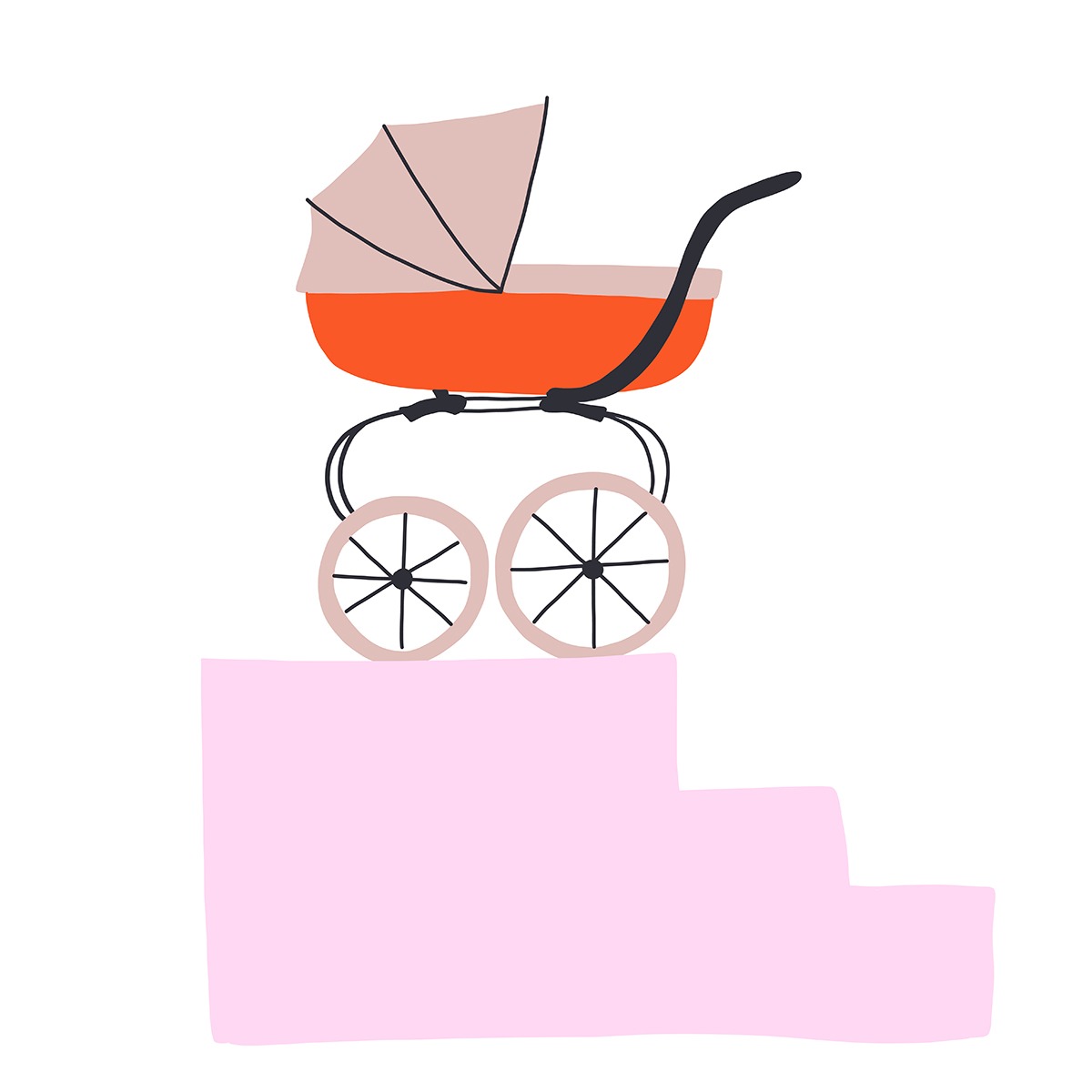‘I Gotta Be Strong for My Babies’
An Oklahoma woman is serving 18 months in prison after being accused of failing to protect her daughter from the girl’s dad.

On Dec. 28, 2016, Tressie Shaffer woke up early for her morning shift at Wendy’s. She made a bottle for her youngest child, a 5-month-old, and gave it to her while the baby’s dad, Jason Scott, his two kids, and Shaffer’s three older children slept. She tucked the baby back in bed before leaving for work at 6:30.
Scott, who was unemployed, took care of the six children in their Tulsa, Oklahoma, home while Shaffer was working her shift that day. Just after 9 a.m., Shaffer’s manager pulled her aside with horrifying news: Her baby wasn’t breathing.
A co-worker drove her home. As they arrived, the baby, identified in court documents by the initials Z.R.S., was being loaded into an ambulance. Later, doctors would report that she had extensive bleeding on her brain and significant retinal hemorrhages, injuries that would most likely leave her blind and on a feeding tube for life. Investigators ultimately charged Jason Scott with causing the baby’s head trauma, attributing her injuries to violent shaking.
“I don’t know what happened, I really don’t,” says Shaffer now, fighting back tears over the phone. “I could never, ever imagine him doing something like that to our daughter. But that’s what they keep saying over and over again.”
Shaffer spoke to the Appeal from the Tulsa County jail, but she was transferred soon after to a state prison to serve out her 18-month sentence. Her crime? Permitting child abuse.
Oklahoma, like many states, has a “failure to protect” law that allows the prosecution of a caregiver who “knows or reasonably should know that the child will be placed at risk of abuse.”
In Shaffer’s case, the prosecution noted that the baby had bruises before the incident, which Shaffer says happened at daycare and when she hit her head on a baby bouncer. They also referenced a prior incident during which Shaffer witnessed Scott shaking the baby; Shaffer says he “jiggled her legs” in a playful manner. Scott hasn’t been tried yet but was charged with child abuse by injury and faces a maximum sentence of life in prison.
Shaffer, whose attorneys have filed a notice of appeal, told The Appeal she had no reason to suspect that abuse was occurring or would occur. “It’s ridiculous to expect somebody to predict what’s going to happen tomorrow.”
Failure to protect
Oklahoma has the highest incarceration rates in the country, according to a study released in June by the Prison Policy Initiative, and the state incarcerates women at more than double the national rate. Nearly two thirds of the women in the nation’s prisons are mothers of minor children, according to the Bureau of Justice Statistics. Ruth Hamilton, Shaffer’s attorney, said laws like “failure to protect” help fuel women’s imprisonment, which is the fastest-growing segment of the country’s prison population.
While proponents of such laws believe they will encourage parents to keep potentially abusive partners away from children, Hamilton disagrees. “I can’t see any value to this law beyond pure punishment,” said Hamilton, legal director of Still She Rises, an Oklahoma public defense nonprofit that represents mothers in the criminal justice system. “There are a lot of laws that have very limited deterrent value, but you could argue it. But in this case, who is going to be deterred by this? There’s no point to it except just to punish somebody because a child was injured—and not the person who did the injuring.”
I can’t see any value to this law beyond pure punishment.
Ruth Hamilton attorney for Tressie Shaffer
Hamilton recalled another Oklahoma case that was similar. In 2006, Robert Braxton Jr. was sentenced to probation plus two years time served for severely beating two of his girlfriend Tondalo Hall’s three children, but Hall herself was sentenced to 30 years in prison under the “failure to protect” law for permitting the abuse. Hall testified that she was also a victim of Braxton’s abuse. Yet, on her attorney’s advice, she entered a “blind plea” in which she admitted guilt without a deal from the prosecutor. Her sentence, and its seemingly disproportionate severity compared to Braxton’s, brought national attention to the unfair application of such laws, which carry potential life sentences in six states, including Oklahoma. In September, Hall’s request to have her sentence commuted was denied; her next chance to argue for commutation will be in three years.
Kris Steele, a former Oklahoma House speaker who is now the chairperson of Oklahomans for Criminal Justice Reform, said the application of the law is biased toward mothers, and is harming the very children it’s meant to protect. “These children have been traumatized through abuse,” Steele said, “and then when we take the one person out of their life that provides any stability or comfort or nurturing, it makes a bad situation worse.”
Oklahomans for Criminal Justice Reform is hoping state lawmakers will amend the law in the 2019 legislative session, he added. Currently, permitting child abuse and committing child abuse are in the same section of the law, and are punishable with the same range of sanctions. “The goal is to take ‘failure to protect’ out of the section of the state statute that applies to abuse and even murder, and have it in its own statute with its own range of consequences,” Steele said.

Shaffer’s children were taken into foster care as the case was initiated, and Assistant District Attorney Sarah McAmis moved to terminate her parental rights, pushing that case to a jury trial. The children’s attorneys—one was assigned for the three older children and one for the baby —found that the children should remain with their mother. The jury in juvenile court agreed that the children should remain in Shaffer’s care.
Just before Shaffer’s criminal trial began, the juvenile court judge closed the case against Shaffer and even offered to speak to the district attorney on her behalf. But the district attorney’s office pushed ahead with the criminal trial, asking for a life sentence for Shaffer for knowingly permitting child abuse.
“The case of Tressie Shaffer was extensively litigated and ultimately 12 citizens of this community unanimously agreed that she was guilty of the crime of Permitting Child Abuse by Injury,” Assistant District Attorney Andrea Brown, who prosecuted Shaffer’s criminal case, said in a statement after the verdict. “Unfortunately, the victim will endure a lifetime of difficulties and denied opportunities based upon the choices made by Ms. Shaffer. Nothing will ever alleviate that amount of pain and suffering.”
A complicated case
Tressie Shaffer’s story is unusual and complex. Four years before her daughter’s injury, Shaffer’s second child, who is now 7, was found to have been shaken by Shaffer’s previous partner, Michael Lemery, who is serving a 25-year sentence for child abuse. That child sustained bleeding on his brain and in his eyes.
Shaffer’s lawyers argued that the previous incident should not be introduced during her October 2018 trial since it involved a different child and a different partner, and Shaffer was not charged in the incident. But at the trial, Judge Kelly Greenough allowed the inclusion of the Lemery case, as well as the prosecution’s allegations that Shaffer’s home was unkempt and that she had smoked marijuana around her children. Yet the judge excluded the outcome of the juvenile court case that went in Shaffer’s favor. Through a spokesperson, Greenough said she is unable to comment or respond to questions regarding a pending case or a case on appeal.
Hamilton believes the judge’s decisions contributed to Shaffer’s harsh punishment. “I definitely think that was a big part of it,” she said. “It’s hard for people, if they believe that two babies were shaken, it’s hard to believe that she’s being a protective mom.” The prosecution also noted that Z.R.S. had bruises on her body that predated the alleged incident, but Shaffer has incident reports from her daycare showing that the baby had sustained bruises and bite marks there; she had pulled her out of the daycare as a result.
Courts don’t want to look at any of the science.
Trevor Reynolds attorney for Michael Lemery
Another complicating factor in Shaffer’s story is that she, Z.R.S., and her son who was injured have a rare genetic disorder called Marfan syndrome, which affects their connective tissue and can result in heart and eye problems, scoliosis, and other issues. Trevor Reynolds, who represented Lemery in his preliminary hearings, said he argued in court that Marfan syndrome could have led to the older child’s injuries. “Courts don’t want to look at any of the science,” Reynolds told The Appeal. The prosecution’s doctors “look at it like, a baby’s hurt, so somebody must have hurt the baby.” An attorney for Scott said his team is looking at a similar defense, and that Scott maintains his innocence.
There is a major debate around the science of shaken-baby syndrome, also known as abusive head trauma. Prosecutors and many doctors say a “triad” of symptoms—bleeding between the skull and brain, bleeding at the back of the eyes, and brain swelling—confirms a shaken-baby syndrome diagnosis; other doctors say the science isn’t conclusive and other factors, like accidents or underlying disease, can result in these symptoms. The controversy has led to several overturned convictions, but the American Academy of Pediatrics confirmed its support for the diagnosis last year.
Tressie Shaffer hopes to get out of prison by January 2020, when she will first be eligible for release. Until then, her four children are staying with her best friend, who has a 2-year-old of her own. Z.R.S., now 2, has special needs, including a caregiver to administer round-the-clock medicine and feedings. Between switching homes and enduring their mother’s trials, the children have been through a tumultuous upheaval over the past two years, Hamilton said.
“This whole thing has been really, really traumatic for them,” she said. At one point, the Department of Human Services visited Shaffer’s friend’s house. The friend told Hamilton that the children “had a horrible reaction to it, sobbing and blaming themselves.” Hamilton has started a fundraising campaign to help Shaffer’s friend care for the children while Shaffer is incarcerated.
For Shaffer, the sentence came as a shock, but she tries to stay positive for her children, with whom she video-conferences briefly most nights, when she can get access to one of the in-demand machines. “They say to get into a lot of classes to help the time pass,” Shaffer said, “But all I do is think, ‘I gotta be strong for my babies.’”
Correction: This story has been updated to note that Shaffer was transferred from jail to prison soon after our interview.
